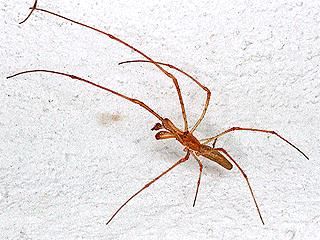Spiders belong to the class Arachnida, which contains organisms with four pairs of legs, no antennae and two body regions. A shield-like carapace covers the head and the area from which the legs arise. Their mouthparts, or chelicerae, function vertically.
Jumping Spiders
The jumping spiders belong to the family Salticidae and are sometimes called salticids. All species are small, usually less than 15-mm long. They are easily identified by their eye arrangement, which is in three rows. Jumping spiders do not construct webs, but actively hunt prey during the day, pouncing on their luckless victims. Many are brightly colored, sometimes with iridescent chelicerae as in the genus Phidippus (Figure 1). Some species such as Plexippus (Figure 2) are commonly found on or around buildings.
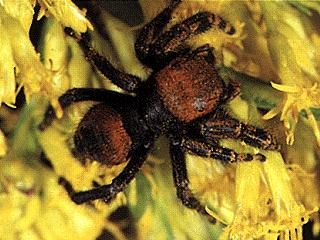
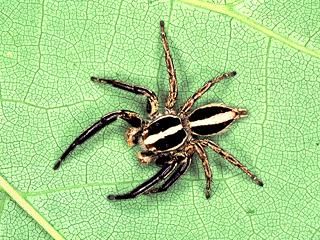
Crab Spiders
Crab spiders are so named because they hold their legs to the side in a crab-like fashion. They commonly are 5-mm to 10-mm long. These spiders do not spin webs, but wait in ambush on flowers and foliage for their insect prey. Crab spiders such as Misumenoides spp. are often extremely well-camouflaged, blending in perfectly with the flowers they live among.
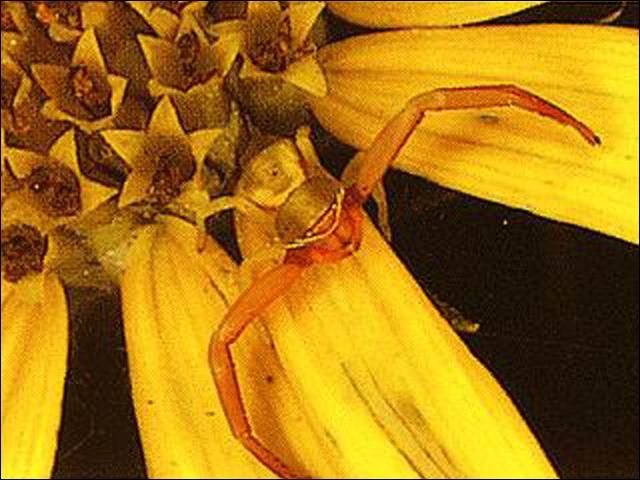
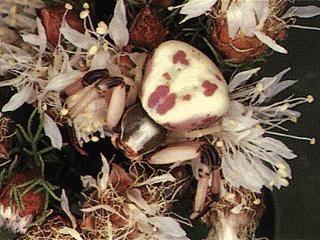
Golden Silk Spider, Nephila clavipes
The golden silk spider is found throughout Florida and the southeastern United States. The female is distinctively colored, and is among the largest orb-weaving spiders in the country. The female is 25-mm to 40-mm long and has conspicuous hair tufts on her long legs. Males are about 4-mm to 6-mm long, dark-brown, and are often found in the webs of females. These spiders feed primarily on flying insects, which they catch in webs that may be greater than a meter in diameter. They are most commonly found in forests, along trails and at clearing edges.
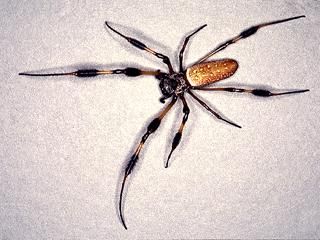
Spiny Orb-Weaver, Gasteracantha cancriformis
The spiny orb-weaver spider is one of the most colorful and easily recognized spiders in Florida. The dorsum of the abdomen is usually white with black spots and large red spines on the margin. Females are 5-mm to 10-mm long and 10-mm to 14-mm wide. The webs typically contain tufts of silk, which may prevent birds from flying into them.
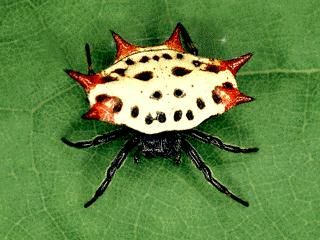
Black and Yellow Argiope Spider, Argiope aurantia
The argiope spiders are a large and distinctive group. Their large, conspicuous webs can often be seen along the edge of woodlands. The black and yellow argiope can reach a length of 25-mm. Its characteristic silver carapace and yellow-and-black markings make it easy to identify. Argiope spiders tend to hang head down in the middle of a medium-sized web that has thickened, zigzag bands of silk in the center.
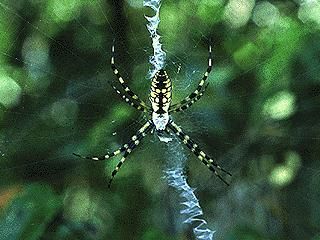
Green Lynx Spider, Peucetia viridans
This spider is commonly encountered on shrubs, weeds and foliage. The female is 12-mm to 20-mm long, while the male seldom gets larger than 12 mm. The body is a vivid, almost transparent green, with red spots and some white markings. The legs are long, slender and covered at intervals with long black spines. These spiders have good eyesight and hunt and stalk their prey during the daytime. They spin no webs but sometimes anchor themselves with silk. They are important predators of caterpillar pests of row crops.
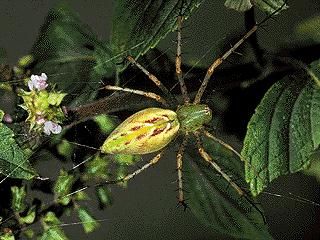
Wolf Spiders
Wolf spiders belong to the family Lycosidae. They are very common and usually found on the ground, where they are well-camouflaged. The Carolina wolf spider (Lycosa carolinensis), at 25-mm to 35-mm, is the largest in the United States. These spiders do not spin webs but some dig burrows or hide under debris. Like other hunting spiders, they have good eyesight and are sensitive to vibrations.
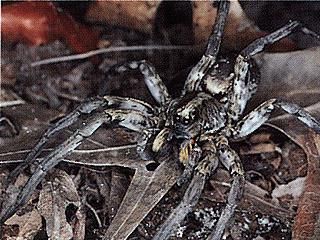
Long-Jawed Orb-Weavers, Genus Tetragnatha
These spiders characteristically cling to a support with their short third pair of legs while holding their remaining, much longer, legs extended in front of and behind the body. They spin small webs that are 8" to 12" in (20 to 30 cm) diameter and catch small flying insects. They are often found in association with foliage bordering water.
